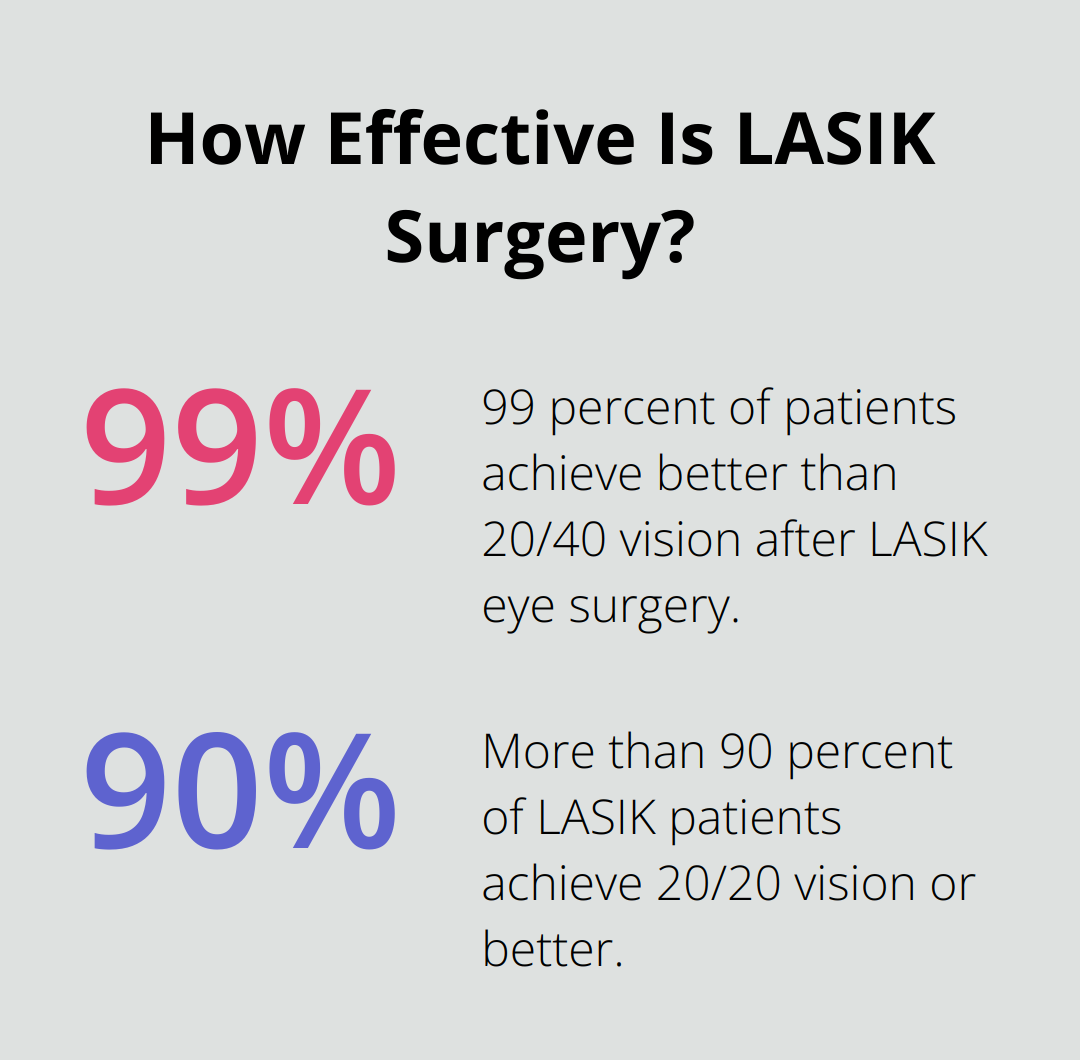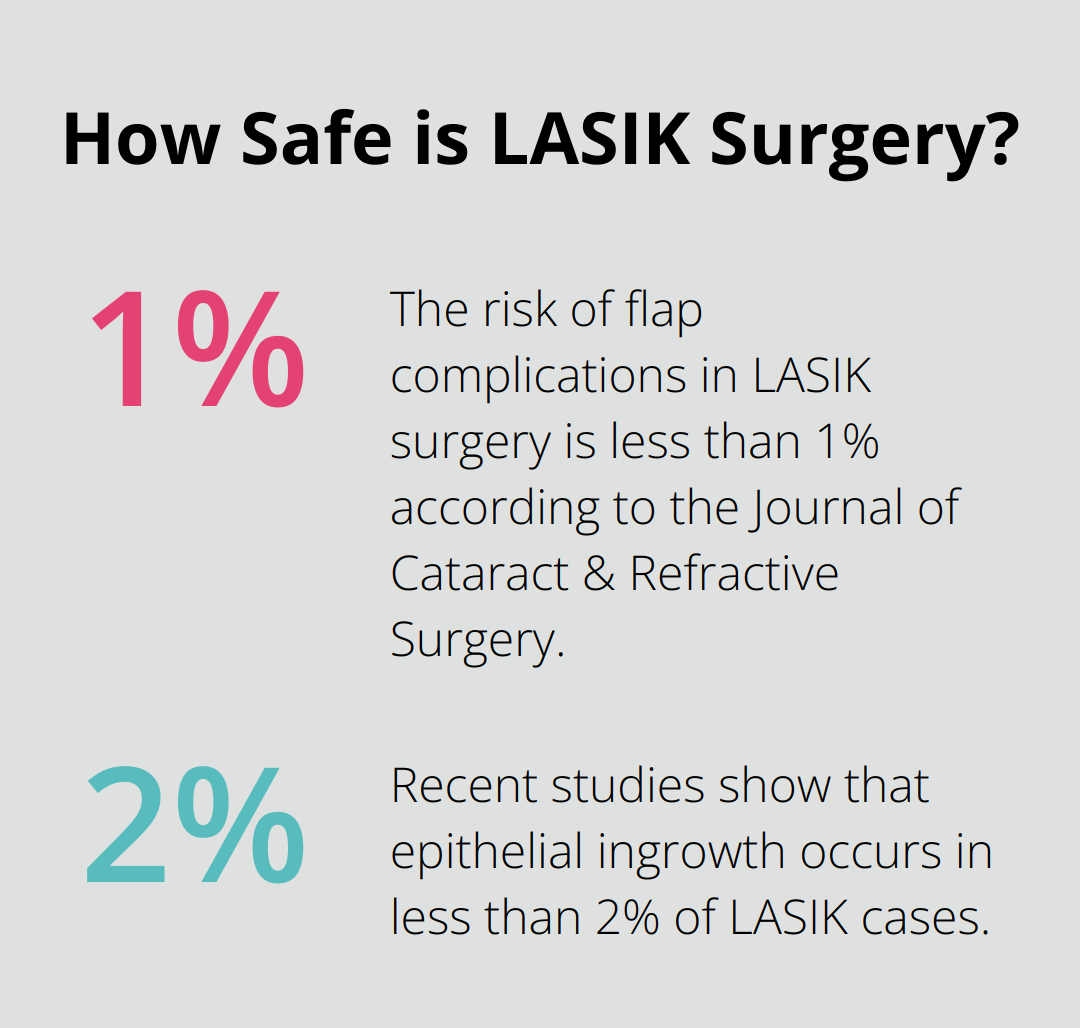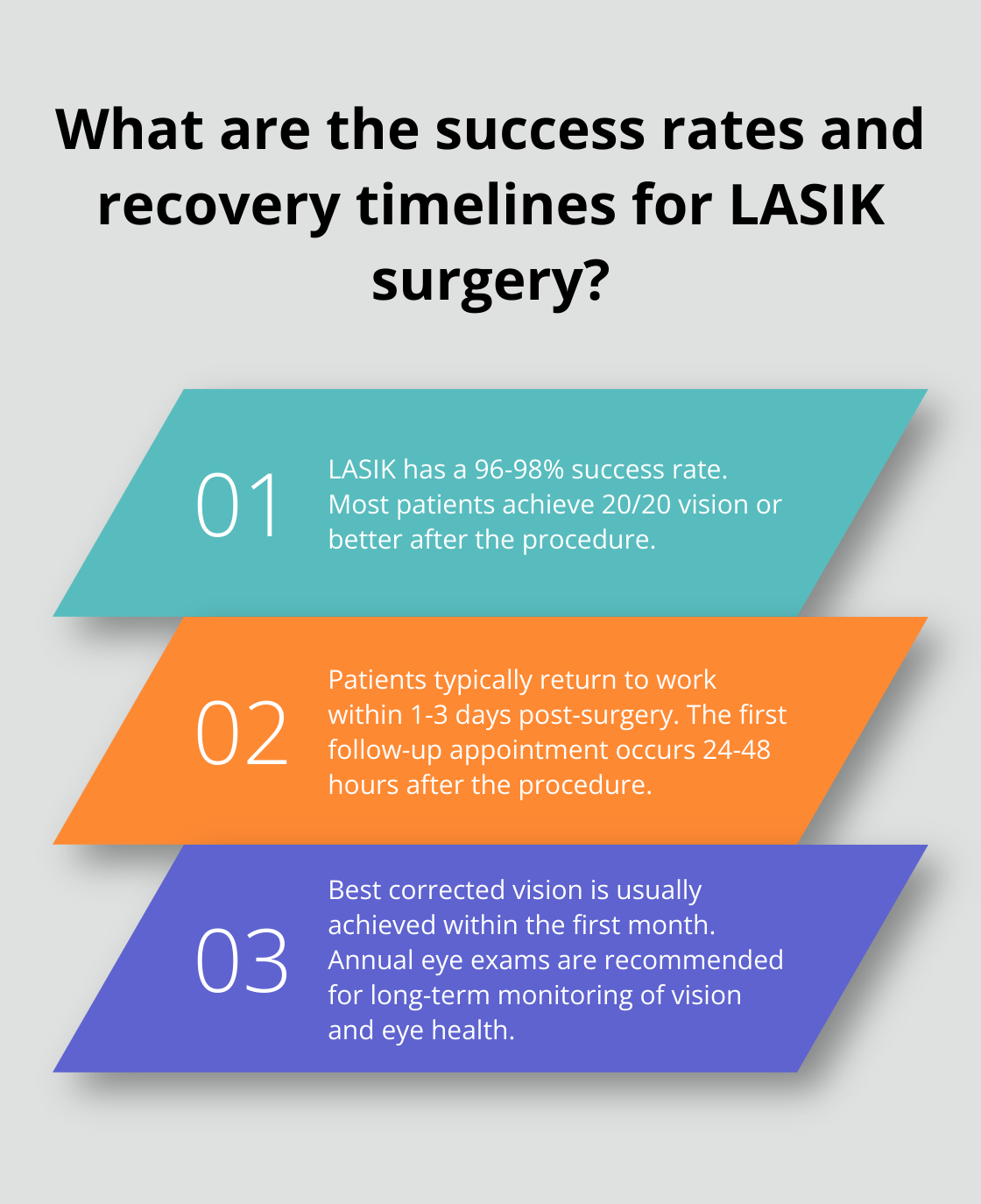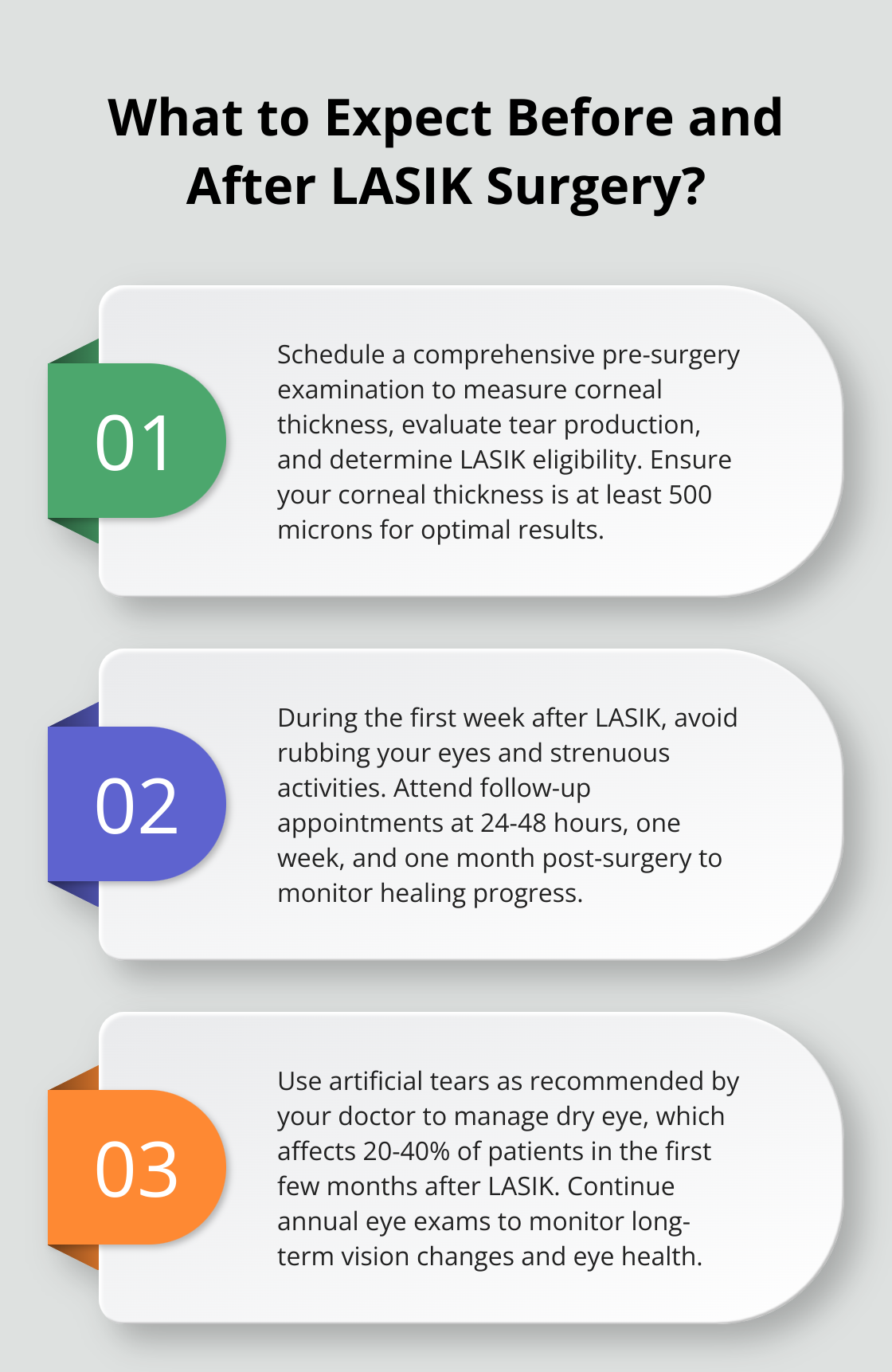How Does Lasik Eye Surgery Work?
At Drs. Campbell, Cunningham, Taylor & Haun, we often get asked, “How does LASIK eye surgery work?” This revolutionary procedure has transformed the lives of millions by correcting common vision problems.
LASIK, which stands for Laser-Assisted In Situ Keratomileusis, uses advanced laser technology to reshape the cornea and improve vision. In this blog post, we’ll break down the LASIK process, from pre-surgery examinations to long-term results, helping you understand this life-changing procedure.
What Is LASIK Eye Surgery?
Definition and Purpose
LASIK eye surgery stands as a groundbreaking vision correction procedure that has transformed the field of ophthalmology. This innovative technique uses precise laser technology to reshape the cornea, correcting refractive errors and improving vision. LASIK (Laser-Assisted In Situ Keratomileusis) offers a solution for those seeking freedom from glasses and contact lenses.
The Evolution of LASIK
The history of LASIK dates back to the 1980s when ophthalmologists began to explore laser technology for vision correction. In 1995, the FDA approved the first excimer laser for PRK (photorefractive keratectomy). LASIK, an advancement of PRK, received FDA approval in 1999. It quickly became the preferred method due to its faster recovery time and reduced discomfort.
Vision Problems Addressed by LASIK
LASIK effectively corrects three primary refractive errors:
- Myopia (nearsightedness): Objects at a distance appear blurry.
- Hyperopia (farsightedness): Close-up objects lack focus.
- Astigmatism: Both near and far vision distorts due to an irregularly shaped cornea.

The latest research reports that 99 percent of patients achieve better than 20/40 vision and more than 90 percent achieve 20/20 or better. This high success rate has propelled LASIK to popularity among those seeking visual freedom.
The LASIK Procedure Overview
During LASIK surgery, an ophthalmologist uses a femtosecond laser to create a thin flap in the cornea. The surgeon then lifts this flap and uses an excimer laser to reshape the underlying corneal tissue. The entire procedure typically takes less than 30 minutes for both eyes.
Advanced wavefront-guided technology creates a detailed map of each patient’s eye, allowing for more precise corneal reshaping. This personalized approach often results in better visual outcomes than traditional LASIK methods.
Candidacy for LASIK
While LASIK proves highly effective, it does not suit everyone. Factors such as corneal thickness, eye health, and overall medical history play crucial roles in determining candidacy. A comprehensive eye examination assesses whether LASIK represents the right choice for an individual’s vision correction needs.
As we move forward, let’s explore the step-by-step process of LASIK surgery, from pre-operative assessments to the actual procedure.
The LASIK Procedure Explained
Comprehensive Pre-Surgery Examination
LASIK surgery begins with a thorough eye examination. This assessment includes corneal mapping, refraction tests, and pupil dilation. Ophthalmologists measure corneal thickness, a significant factor in LASIK eligibility. The American Academy of Ophthalmology states that ideal candidates should have a corneal thickness of at least 500 microns.

The examination also evaluates tear production. Adequate tear production is essential for post-operative healing and comfort. Patients with severe dry eye may not qualify for LASIK.
Advanced Corneal Flap Creation
The first step of the LASIK procedure involves the creation of a thin corneal flap. A femtosecond laser performs this process, offering superior precision compared to traditional mechanical microkeratomes. Both methods are safe and effective for correcting myopia, with no statistically significant differences.
This laser-assisted method reduces the risk of flap complications to less than 1% (as reported in the Journal of Cataract & Refractive Surgery). The entire flap creation process takes only about 15 seconds per eye.
Precise Corneal Reshaping
After the flap creation, the surgeon gently lifts it to expose the inner layers of the cornea. An excimer laser then reshapes the cornea according to the patient’s specific vision correction needs. This laser removes microscopic amounts of tissue, typically less than the thickness of a human hair, to correct refractive errors.
The excimer laser works with remarkable precision, able to remove 0.25 microns of tissue in a single pulse. For context, a human red blood cell is about 5 microns thick. This level of accuracy allows for highly predictable results.
Careful Flap Repositioning
After the corneal reshaping, the surgeon carefully repositions the corneal flap. The flap naturally adheres back into place without the need for stitches. This unique aspect of LASIK contributes to its rapid recovery time. Most patients experience improved vision within 24 hours of the procedure.
A special instrument smooths out the edges of the flap, ensuring proper alignment. This step prevents complications such as epithelial ingrowth, which occurs in less than 2% of cases according to recent studies.
The entire LASIK procedure typically takes about 10 minutes per eye. Patients remain awake throughout, experiencing only mild pressure sensations. The next phase of the LASIK journey involves recovery and results, which we will explore in detail in the following section.
What Happens After LASIK Surgery?
Immediate Post-Surgery Experience
LASIK patients often notice improved vision within hours after surgery. However, initial blurriness and mild discomfort are normal. Patients should rest their eyes and avoid rubbing them. LASIK boasts a 96-98% success rate, with most patients achieving 20/20 vision or better.
Short-Term Recovery Timeline
The first week after LASIK is critical for proper healing. Most patients return to work within 1-3 days but should avoid strenuous activities for at least a week. Follow-up appointments typically occur at 24-48 hours post-surgery, then at one week and one month. During this period, many patients experience significant vision improvement, with most achieving their best corrected vision within the first month.
Long-Term Vision Improvements
LASIK results generally last long-term. However, natural age-related changes can still affect vision over time. Annual eye exams help monitor vision and eye health.
Potential Side Effects
While LASIK is generally safe, patients should know about potential side effects. Dry eye affects about 20-40% of patients in the first few months (according to the American Academy of Ophthalmology). Artificial tears and other treatments can manage this condition. Night vision disturbances like halos or glare may occur initially but typically resolve within 3-6 months for most patients.
Rare Complications
Serious complications are uncommon. The FDA reports that less than 1% of LASIK patients experience severe vision-threatening problems. Advanced technology and strict protocols minimize risks and help ensure the best possible outcomes for patients.

Final Thoughts
LASIK eye surgery has revolutionized vision correction, offering a safe and effective solution for those seeking freedom from glasses and contact lenses. This advanced procedure reshapes the cornea with precision, addressing common refractive errors like myopia, hyperopia, and astigmatism. The high success rates and rapid recovery times have made LASIK a popular choice for vision enhancement.

Understanding how LASIK eye surgery works empowers patients to make informed decisions about their eye care. The procedure’s step-by-step process showcases the intricate technology and skill involved in modern ophthalmology. While the benefits of LASIK are significant, it’s important to recognize that not everyone is a suitable candidate.
For those considering LASIK, consulting with experienced eye care professionals is essential. At Drs. Campbell, Cunningham, Taylor & Haun, we offer expert guidance and state-of-the-art LASIK procedures in East Tennessee. Our skilled team provides comprehensive eye care services (including advanced vision enhancement techniques) to help patients achieve optimal visual clarity.